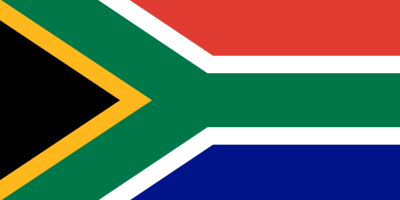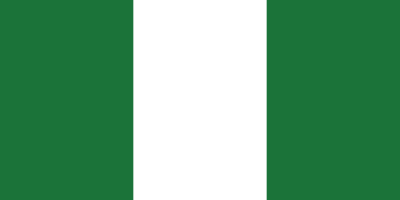Somalia flag color codes is one of the most recognizable in Africa with its light blue field and large white five-pointed star. The light blue represents the sky and the Indian Ocean, while the star symbolizes African unity and aspiration. If you want to incorporate the colors of the Somalia flag into your website or design project, knowing the exact Somalia flag color codes is essential. This article provides the hex, RGB, Pantone, HSL, CMYK, HWB and NCOL values for the Somalia flag colors. With this comprehensive guide to the Somalia flag color codes, you’ll have all you need to accurately display and use the blue and white tones of the Somalia flag. Whether you are designing a graphic for a school project or creating a website celebrating Somalia culture, these Somalia flag color codes will ensure the colors match precisely.
Table of Contents
What are the colors of Somalia flag?
The Somalia flag consists of the following colors:
- Light Blue – The main background color of the flag. This represents the sky and the Indian Ocean.
- White – The large five-pointed star in the center of the flag is white in color. This represents unity and hope.
The specific color codes are:
- Light Blue: HEX – #4189DD RGB – (65,137,221) Pantone – 286 C CMYK – (71, 38, 0, 13)
- White: HEX – #FFFFFF RGB – (255,255,255)
Pantone – White CMYK – (0,0,0,0)
So in summary, the two colors on the Somalia flag are:
- Light Blue
- White
The light blue represents the sky and ocean, while the white star represents unity and hope for the African people. The color symbolism reflects the geography and aspirations of the Somali nation.
Somalia flag color codes & Color Names:
BLUE
| Color Model | Values |
|---|---|
| HTML | #0072C6 |
| HEX | 0072C6 |
| RGB | (0, 114, 198) |
| PANTONE | 3005 C |
| HSL | (207°, 100%, 39%) |
| CMYK | (100%, 43%, 0%, 22%) |
| HWB | (207°, 0%, 22%) |
| NCOL | #018BC1 |
WHITE
| Color Model | Values |
|---|---|
| HTML | #FFFFFF |
| HEX | FFFFFF |
| RGB | (255, 255, 255) |
| PANTONE | |
| HSL | (0°, 0%, 100%) |
| CMYK | (0%, 0%, 0%, 0%) |
| HWB | (0°, 100%, 0%) |
| NCOL | #FFFFFF |
What is the meaning of colors in the Somalia flag?
The colors of the Somalia flag represent the following symbolic meanings:
- Light Blue – The main background color represents the sky and the Indian Ocean which border Somalia. The blue depicts the importance of these natural features to the country.
- White – The large white five-pointed star in the center symbolizes the unity and aspiration of the Somali people. White represents peace, harmony and hope for the future.
- The five points of the star refer to the five historical regions of Somalia – British Somaliland, Italian Somaliland, French Somaliland, Ogaden and Northern Frontier District.
In summary:
- Light Blue – The sky and the Indian Ocean which are integral to Somalia
- White – Unity, peace and hope for the Somali people
- Five Points of Star – The five major historical regions of the country
The light blue, white and star shape reflect Somalia’s geography as well as the unity and ambition of its people. The flag expresses a pride in Somalia’s natural beauty and hope for a peaceful, united future.
Explore More Flag Colors:
FAQs: Frequently Asked Questions:
What is Somalia famous for?
Somalia, located in the Horn of Africa, is known for several aspects:
Geographic and Cultural Diversity: Somalia is renowned for its diverse geography, ranging from coastal areas along the Indian Ocean to semi-arid plains and highlands. The country is home to various ethnic groups and cultural traditions, including Somali, Arabic, and Afro-Asiatic influences.
Maritime History: Somalia has a long history of seafaring and maritime trade, dating back centuries. Somali sailors and merchants were known for their navigational skills and trading networks along the East African coast, the Arabian Peninsula, and beyond.
Nomadic Heritage: Traditional Somali society is characterized by a nomadic pastoralist lifestyle, with many communities relying on livestock herding for sustenance and livelihood. Nomadic traditions, including clan structures and customary laws, continue to play a significant role in Somali culture.
Cultural Heritage and Arts: Somalia has a rich cultural heritage, including poetry, music, dance, and visual arts. Somali poetry, known as “Gabay” or “Hees,” is highly regarded, with poets celebrated for their lyrical expression and social commentary.
Islamic Heritage: Islam has been a central aspect of Somali identity and culture for over a millennium. The majority of Somalis are Sunni Muslims, and Islam has influenced various aspects of Somali society, including language, law, and customs.
Civil Unrest and Conflict: Somalia has experienced decades of political instability, civil unrest, and conflict, including a prolonged civil war and the presence of militant groups such as Al-Shabaab. These challenges have had significant humanitarian and socioeconomic impacts on the country and its people.
What is illegal in Somalia?
Here are some examples of activities that are generally considered illegal or prohibited in Somalia:
Alcohol: The production, sale, and consumption of alcohol are illegal in Somalia, in accordance with Islamic law, which prohibits the consumption of intoxicants.
Gambling: Gambling activities, including casinos and sports betting, are generally illegal in Somalia due to religious and cultural considerations.
Pork Products: The consumption of pork and pork products is prohibited under Islamic dietary laws and is thus illegal in Somalia.
Adultery and Fornication: Sexual relations outside of marriage (fornication) and adultery are considered illegal and are punishable under Sharia law.
Blasphemy: Insulting or disrespecting Islam, the Prophet Muhammad, or religious figures is considered blasphemous and may be subject to legal penalties.
Homosexuality: Same-sex sexual activity is illegal and punishable under Sharia law in Somalia.
Drug Trafficking: The trafficking and distribution of illegal drugs, such as khat and other narcotics, are illegal in Somalia and can carry severe penalties.
Terrorism and Insurgency: Participation in terrorist activities, insurgency, or affiliation with terrorist organizations such as Al-Shabaab is illegal and subject to prosecution under Somali law.
Is Somalia safe to visit now?
The safety situation in Somalia can vary significantly depending on the region and current circumstances. While there has been some progress in security and stability in certain areas, the overall security situation in Somalia remains fragile due to ongoing conflict, political instability, and the presence of militant groups.
Travel to Somalia is generally discouraged by most foreign governments due to safety concerns, including the risk of terrorism, armed conflict, kidnapping, piracy, and violent crime. The threat of terrorism, particularly from extremist groups like Al-Shabaab, remains high, with attacks targeting government officials, security forces, civilians, and foreign nationals.
How is Somalia doing today?
Here are some key aspects of Somalia’s current situation:
Political Situation: Somalia has been grappling with political instability and governance challenges for decades. The country operates under a federal system, but there have been ongoing tensions between the federal government and regional administrations, as well as among various political factions. Efforts to establish a stable political order, hold elections, and address constitutional reforms have faced significant obstacles and delays.
Security Concerns: Somalia faces security threats from various sources, including militant groups such as Al-Shabaab and other armed factions. Al-Shabaab continues to carry out attacks targeting government institutions, security forces, civilians, and international actors. Additionally, piracy remains a concern in Somalia’s coastal waters, although international efforts have helped reduce its prevalence in recent years.
Humanitarian Challenges: Somalia has experienced recurring humanitarian crises, including droughts, food insecurity, displacement, and health emergencies such as the COVID-19 pandemic. These challenges exacerbate the vulnerability of vulnerable populations and strain the capacity of humanitarian organizations to provide assistance and support.
Economic Situation: Somalia’s economy faces numerous challenges, including widespread poverty, unemployment, limited infrastructure, and dependence on remittances and foreign aid. Efforts to stimulate economic growth and development are hindered by insecurity, corruption, and institutional weaknesses.
Is Somalia a poor country?
Yes, Somalia is generally considered to be a poor country. It faces significant socio-economic challenges, including widespread poverty, limited access to basic services such as healthcare and education, high unemployment rates, and inadequate infrastructure.
Who controls Somalia?
These regional administrations include:
Puntland: Puntland is a semi-autonomous region in northeastern Somalia. It has its own government institutions, including a regional parliament and president, and exercises a degree of self-governance in areas such as security, education, and resource management.
Somaliland: Somaliland is a self-declared independent state in northwestern Somalia. Although it is not internationally recognized as an independent country, Somaliland operates as a de facto state with its own government institutions, including a president, parliament, and judiciary.
Jubaland: Jubaland is a semi-autonomous region in southern Somalia, bordering Kenya. It has its own regional administration and government structures, including a president and regional assembly.
Southwest State: Southwest State is a federal member state in southwestern Somalia. It has its own regional government and administration, led by a president and regional assembly.
Galmudug: Galmudug is a federal member state located in central Somalia. It has its own regional government and administration, with a president and regional assembly.
What is bad about Somalia?
The country has struggled to establish effective state institutions and achieve political reconciliation among various factions.
Security Concerns: Somalia faces significant security threats from militant groups such as Al-Shabaab, which has carried out attacks targeting government institutions, security forces, civilians, and international actors. Additionally, clan-based conflicts and violence contribute to insecurity in many parts of the country.
Humanitarian Crises: Somalia has faced recurring humanitarian crises, including droughts, famines, displacement, and food insecurity. These crises exacerbate poverty and vulnerability among the population, particularly in rural areas.
Economic Challenges: Somalia’s economy is characterized by widespread poverty, high unemployment, limited infrastructure, and dependence on remittances and foreign aid. Economic development is hindered by insecurity, corruption, and a lack of investment in key sectors.
Corruption: Corruption is pervasive in Somalia and affects various aspects of public life, including government institutions, business practices, and service delivery. Corruption undermines accountability, transparency, and public trust in state institutions.
Limited Access to Basic Services: Many Somalis lack access to essential services such as healthcare, education, clean water, and sanitation. The provision of basic services is hindered by conflict, insecurity, and limited government capacity.
Which part of Somalia is safe?
The safety situation in Somalia can vary significantly depending on the region and current circumstances. Generally, some areas may be relatively safer than others, but it’s essential to exercise caution and stay informed about the security situation at all times. Here are some regions in Somalia that are considered relatively safer or more stable:
Somaliland: Somaliland, located in northwestern Somalia, has enjoyed relative stability compared to other parts of the country. While not internationally recognized as an independent state, Somaliland operates as a de facto autonomous region with its own government institutions, security forces, and functioning administration.
Puntland: Puntland, situated in northeastern Somalia, has its own regional government and security forces. While it faces occasional security challenges, particularly along its border with the semi-autonomous region of Galmudug, Puntland is generally considered relatively stable compared to other parts of Somalia.
Galmudug: Galmudug, located in central Somalia, has its own regional administration and security forces. While it has experienced periods of instability and conflict, efforts to establish governance structures and security arrangements have contributed to relative stability in some areas.
Jubaland: Jubaland, in southern Somalia near the border with Kenya, has its own regional administration and security forces. While it has experienced tensions with the federal government and occasional security incidents, Jubaland is generally considered relatively stable compared to other parts of southern Somalia.













